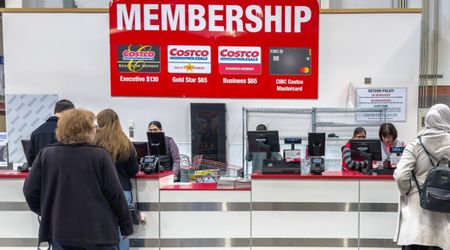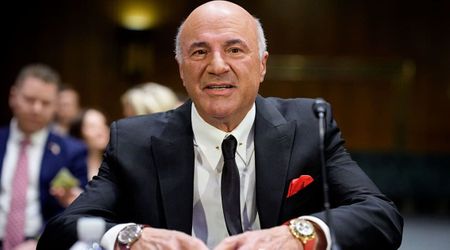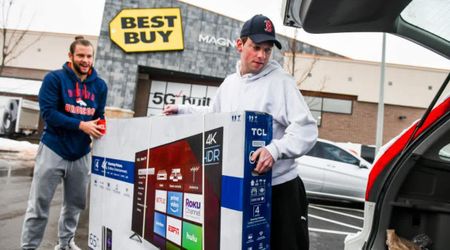Cash Stuffing Trend on TikTok is Leading to Significant Savings; Here's How it Works

TikTok is transforming the landscape of personal finance, and innovative trends that capture the attention of young users are acting as catalysts for this change. One such trend making waves, especially among Gen Z, is 'Cash Stuffing,' which is also known as cash envelope budgeting, and has gained traction for its simplicity in helping individuals take control of their finances. In this article, we will explore how it works, analyze its impact on financial habits, and examine its relevance in an increasingly cashless society.

What is cash stuffing?
At its core, cash stuffing is grounded in the principles of zero-based allocation budgeting. The methodology involves allocating physical cash for spending over a specific period and organizing it into designated envelopes. While adaptable to individual preferences, the central concept revolves around creating a budget per pay period and allocating funds to different spending categories.
For instance, if you receive a weekly paycheck, you might decide to leave a specific amount in your bank account to cover essential expenses like rent and bills. On the other hand, some individuals prefer the tangible nature of cash and opt to withdraw their entire pay, for managing their living expenses in cash.
How cash stuffing works
The allocated cash is then distributed into categories such as groceries, coffee, shopping, commuting, or dining out. Traditionally, these funds were placed into envelopes, but the TikTok trend involves individuals 'stuffing' their cash into a binder or another creative container. The primary goal of cash stuffing is to prevent overspending, with any remaining funds at the end of the period redirected towards savings, debt reduction, or a significant purchase.

TikTok and Instagram trends
The meteoric rise of cash stuffing can be attributed to the influence of social media, particularly platforms like TikTok and Instagram. Users on these platforms not only share their experiences with cash stuffing but also showcase their creative approaches to make the process visually appealing and shareable.
The hashtag #CashStuffing on TikTok reveals a plethora of videos where users showcase their personalized cash-stuffing methods, offering a glimpse into the diversity and creativity within this financial trend. The trend has created a digital community, fostering discussions on budgeting, financial goals, and responsible spending.
Impact and findings
Research indicates that individuals are less likely to overspend when dealing with physical cash compared to card payments. The concept of the "pain of paying" is believed to be more pronounced when handling tangible cash, making individuals more conscious of their spending habits. In a world where digital transactions dominate, the use of physical cash in cash stuffing provides a tangible and visual way for individuals, particularly those from Gen Z, to manage their finances.
Users have reported saving significant amounts, ranging from $500 to $1,000 weekly, showcasing the tangible impact of this budgeting method on their financial well-being.

Origin and popularity via influencers
The roots of cash stuffing can be traced back to the 1970s, with the zero-based budgeting method. Influencers like Dave Ramsey and platforms like 'You Need A Budget' have played a pivotal role in modernizing and popularizing this budgeting approach. Ramsey, a Texas-based financial guru, introduced the 'envelope system' as part of his teachings, emphasizing the importance of allocating physical cash to various spending categories.
The You Need A Budget (YNAB) app, founded by Jesse Mecham, also aligns with the principles of zero-based budgeting, encouraging users to allocate every dollar to a specific purpose, ensuring a comprehensive and intentional approach to spending.
Challenges in a cashless society
As we navigate an era of increasing digitalization, critics argue that the relevance of cash stuffing may diminish. With businesses having the option to refuse cash payments and the decline of physical currency in Australia, the future of cash stuffing faces challenges. However, for now, its effectiveness in promoting financial mindfulness persists.
The cashless trend is evident, with cash payments dropping to only 13% of all spending in Australia last year. Despite these challenges, cash stuffing continues to gain popularity among those seeking a tactile and intentional approach to their finances.
Embracing financial empowerment
In the dynamic world of personal finance, trends come and go, but cash stuffing appears to have found a solid foothold, especially among the tech-savvy and financially conscious Gen Z. Whether it's the tactile nature of physical cash or the discipline of budgeting, cash stuffing has proven to be more than just a fleeting trend.
In the end, the effectiveness of any budgeting method lies in its ability to align with individual preferences and promote financial well-being. As we continue to adapt to new financial norms, cash stuffing emerges as a tangible and visually impactful way for individuals to connect with their money, one dollar at a time.
























